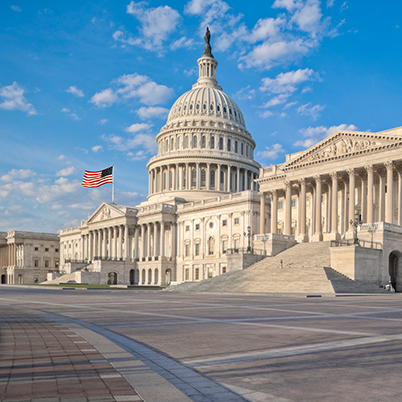
Ripple Effects: The Fall of Roe v. Wade
By Lauren Rubenstein, Mackenzie Marshall,
06.24.2024
Today, June 24, 2024, marks the two-year anniversary of the Dobbs decision. Since the fall of Roe v. Wade, our nation’s political landscape has shifted dramatically. We knew that this decision would have a resounding impact on our reproductive freedoms and access to essential abortion care, but we did not yet understand how far the ripple effects would go.
We have seen attacks on the use of Mifepristone, a drug used in medication abortion that is safer than Tylenol, and attempts to block or limit access to contraception, IVF treatments, and emergency medical care. Not only does the list go on, but importantly, the message behind these attacks is an affront to a core value of the American health care system: that all patients deserve the best possible care.
However, what state policymakers and anti-abortion extremists did not expect, were the unintended consequences of their actions as it relates to everyday access to essential health care for consumers. As a result of these restrictions and bans, many providers are choosing, sometimes at great cost to their financial security and their own health and wellbeing, to leave their jobs for work in less restrictive states, leaving Americans to pay the price.
As providers become more and more scarce in rural areas, consumers lose access to basic wellness procedures like pap smears, cancer screenings, and exams, directly resulting in poorer health outcomes. This has an outsized impact people of color and those who live in rural communities. Black Americans, American Indian and Alaska Natives are not only more likely to live in states with restrictions or bans, but data shows they have higher uninsured rates and fewer financial resources.
The Dobbs decision exacerbated the existing health care workforce shortage beyond just OBG-YNs. Clinicians report that restrictive abortion policies are “worsening their ability to practice within the standard of care, manage miscarriages and pregnancy related emergencies, and having a negative impact on patient-provider relationships.” Physicians across specialties are leaving to work in states where they feel safe to practice medicine.
Take a trauma surgeon from Texas for example. Having experienced life-threatening complications during her own pregnancy, she understands the fears held by the millions of women who live under abortion bans. Practicing medicine in a state with one of the most restrictive abortion bans in place now in the post-Dobbs era, led her to make the difficult decision to pick up her family and move to the Pacific Northwest.
“I feel that I am actually able to do my job without having to worry about these unintended consequences, or whether someone is going to come after me because they think I contributed to the loss of a fetus…I have a living breathing patient in front of me and that person is my priority… We are having lawmakers with zero medical training making medical decisions and playing doctor that is going to cause a lot of people to die.”
Following in these provider’s footsteps: incoming medical residents.
Rachel, a recent medical school graduate who has just begun her residency, shared with us what she considered when deciding where to continue her path to becoming a provider.
“As I was applying to residency, one of the biggest factors was location. Not just in relation to family or friends but based on where I could learn to provide the highest quality care. As a medical student, I saw how important the full spectrum of reproductive care, including abortion, is to people’s health and as a result, I limited my search to programs in states without restrictions. I am happy to say that I matched into residency in New York and will able to learn, train and practice in an environment that puts patients first.”
Rachel’s story is not unique, one survey found that among third- and fourth-year medical students, nearly 60% said they were unlikely to apply to residency programs in states that restrict abortion. The potential threat of criminal sanctions, loss of their license, and financial risk when providing critical reproductive health care has led to a 6.7% decrease in OB-GYN residency applications in states with total abortion bans in 2024 alone, with individual states reporting even more dire circumstances.
The mass exodus of providers and incoming residents creates a significant challenge for hospitals, primary care providers, and specialists who are not able to meet the demand of health care consumers. And ultimately, it’s the consumers who suffer the most.
But instead of commonsense solutions focusing on access to contraception, sexual education or even addressing the racial discrimination patients face at the doctor’s office, we are faced with ban after ban. Families USA stays committed to fighting for reproductive justice, finding new ways to fill provider shortage gaps, and working toward equitable access to health care for all.




